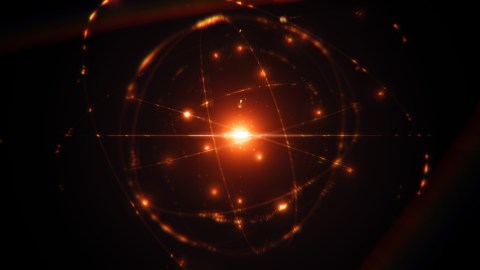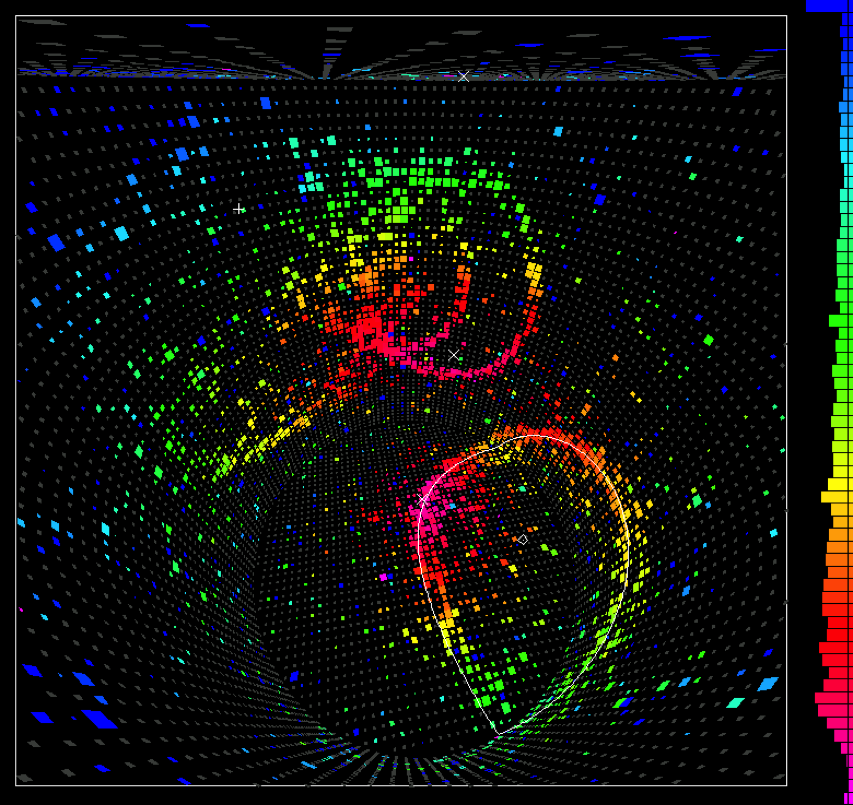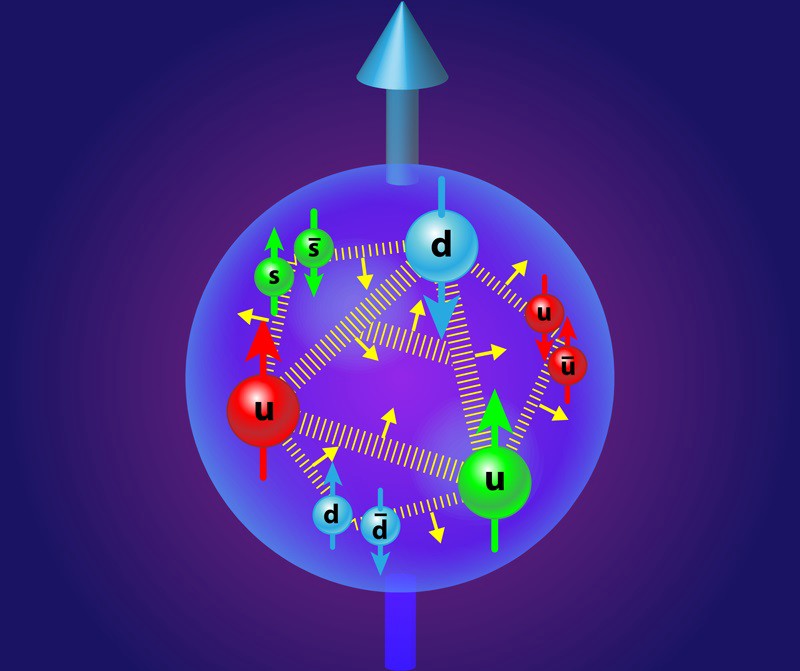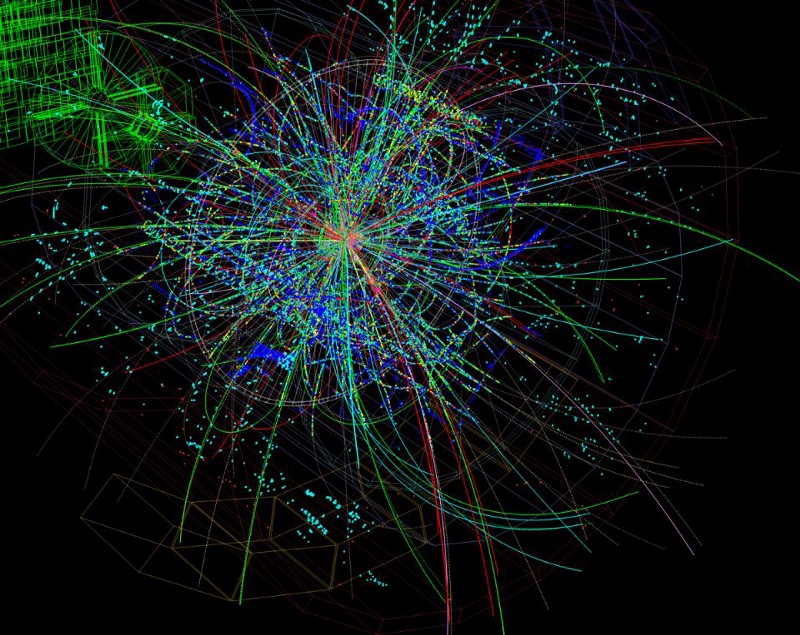Subatomic ghosts shed new light on the structure of protons

- A study conducted by researchers at the Fermi National Accelerator Laboratory confirms decades-old measurements regarding the size and structure of protons.
- The study represents the first direct measurement of the size of the proton using the weak force.
- It also represents a new method for studying weak force interactions.
Many advances in the history of science can be directly attributed to the development of a new way of looking at things. Galileo didn’t invent the telescope, but he turned it to the heavens and, with the discovery of the moons of Jupiter, resolved the question of whether the Sun or the Earth was the center of the solar system. And with the discovery of radiation, scientists gained insight into the nature of the atom.
In that noble tradition, scientists at Fermi National Accelerator Laboratory published a paper in the journal Nature that describes studies of the size and structure of the proton using neutrinos, which are the most weakly interacting of the known subatomic particles. The study demonstrates a new method for studying weak force interactions, one of the four known fundamental interactions in the Universe.
Measuring protons
The proton is one of the building blocks of matter, found at the center of atoms. Hydrogen, the lightest of the elements, consists of one proton and one electron. While the proton was long thought to be a point-like particle without internal structure, in the 1960s and 1970s scientists learned differently. Using beams of electrons, scientists probed inside the proton and studied its constituents. Examining this data, researchers eventually deduced that the proton consists of smaller particles still, called quarks.
Like the proton, quarks experience the electric force, which is how they interact with electrons. Among many other properties, scientists have determined that protons can be pictured as tiny spheres with a radius of 0.8409 ± 0.0004 femtometers – basically a quadrillionth of a meter. Inside that sphere, quarks and other constituents of the proton orbit one another with wild abandon; outside the sphere – nothing.
However, because this radius is determined using interactions between the electron and the proton, the result reflects a combination of the distribution of quarks and the nature of the electric force. Another probe might shed a different light on the situation.
The neutrino is a subatomic particle that interacts only via the weak nuclear force. This force is extremely weak – of order 0.1% the strength of the electromagnetic force. Furthermore, the range over which the weak force is noticeable is very small – smaller than the size of a proton. Because the interaction is so weak and the range over which it operates is so short, neutrinos can pass very easily through matter. Indeed, neutrinos can pass through the entire Earth, with only a small chance of interacting.
With such a small interaction probability, the only way to see interactions between neutrinos and matter is to use lots and lots of neutrinos. Essentially, it is very much like playing the lottery. While the chances of any individual ticket winning are very low, if you buy millions of tickets, you greatly increase your chances of winning.
Fermi National Accelerator Laboratory (a.k.a. Fermilab) is home to the world’s most intense beam of neutrinos. (Disclosure: I am a scientist employed by Fermilab but I did not participate in this research.) They used a detector called MINERVA to perform this study.
Over time, MINERVA scientists fired a billion trillion (1021) protons at a target, which generated a beam of neutrinos, which then resulted in a total of about 5,000 neutrino interactions from which they made their measurements. Here’s an idea of how rare these interactions are: If we use a marble with a diameter of one centimeter (~0.25”) to represent a single proton in the particle beam, it would take a cube about 600 meters (0.3 miles) on a side, filled with marbles, to generate one useful neutrino interaction.
To make precise studies of protons using neutrinos, one would ideally build a target consisting solely of protons (or hydrogen, which also includes an electron). However, hydrogen targets are not sufficiently dense. So the researchers instead used polystyrene, which consists of carbon and hydrogen. Carbon nuclei also contain protons, but they also include neutrons.
The team used the fact that within a carbon nucleus both protons and neutrons are orbiting one another and thus moving. By selecting neutrino interactions within polystyrene, and then further selecting those in which the proton that scattered the neutrino were nearly stationary, they were able to isolate interactions where the neutrino hit a hydrogen nucleus.
With this pure sample of proton/neutrino interactions, the researchers were able to measure the size of the proton using only the weak nuclear force. They found the proton’s radius to be 0.73 ± 0.17 femtometers. This measurement isn’t as precise as that achieved using electron beams, but it is the first direct measurement of the size of the proton using the weak force. It confirms the earlier measurement and validates that it can be used in current calculations.
DUNE
While Fermilab’s accelerator complex already generates the most intense neutrino beams available, the laboratory has undertaken a decade-long facility improvement plan, which will result in a tenfold increase in beam intensity. They will use this new beam to shoot neutrinos through the Earth to a detector called the Deep Underground Neutrino Experiment (DUNE).
DUNE is being built 1,300 kilometers (800 miles) away from Fermilab in South Dakota in a cavern about a mile underground. The researchers will study a fascinating behavior of neutrinos, whereby they change their identity over time, changing into other particles, before returning to their original identity. This new measurement of the proton’s size using only the weak nuclear force gives scientists more confidence in their calculations for the future research program.
While the new measurement of the size of the proton using neutrinos is not as accurate as the one that employs electrons, the original measurements using electrons weren’t very accurate either. What’s important is that a new method has been developed to study weak force interactions. It’s a first step and one that scientists can now exploit to better understand the laws of the Universe.





